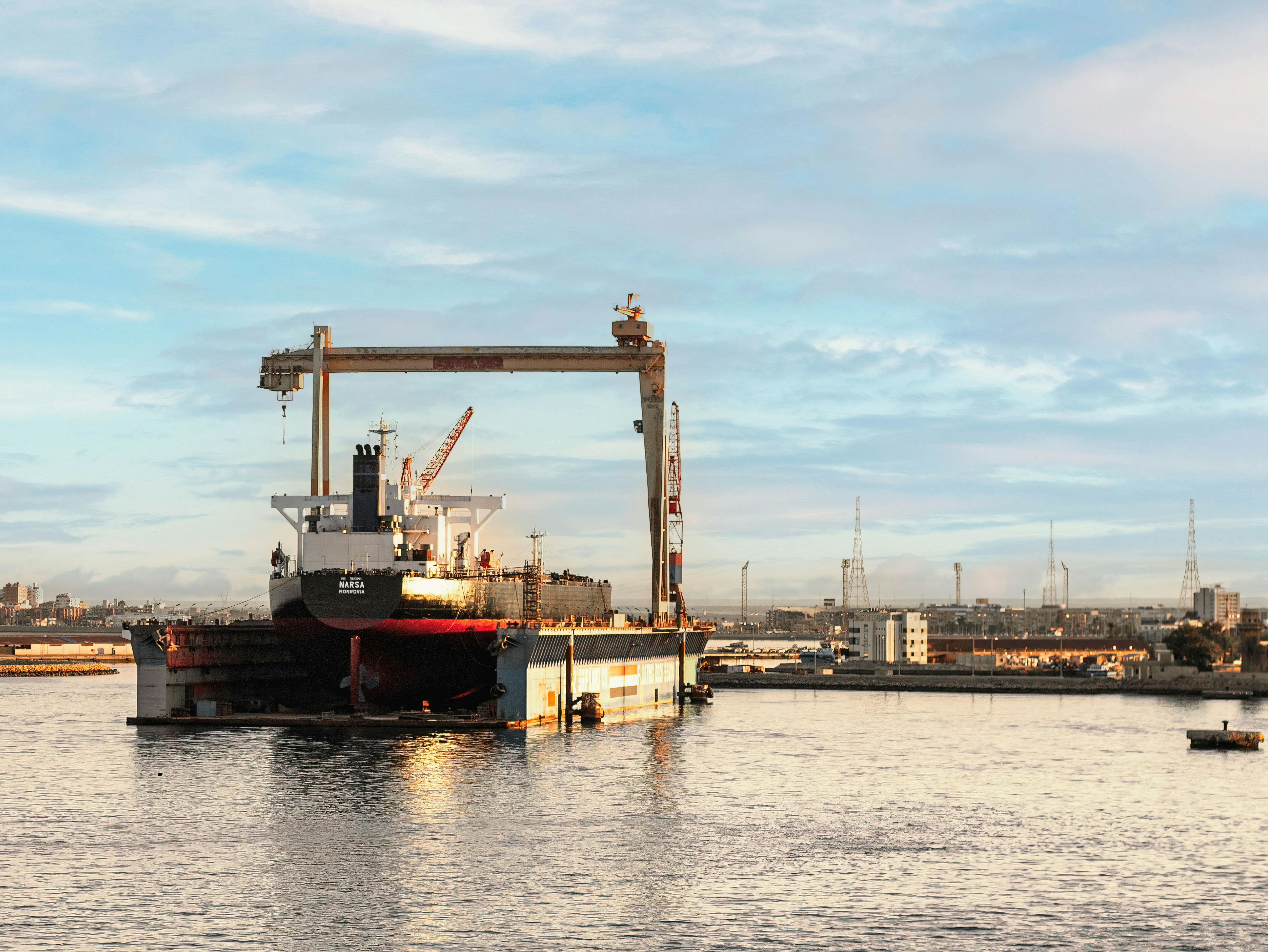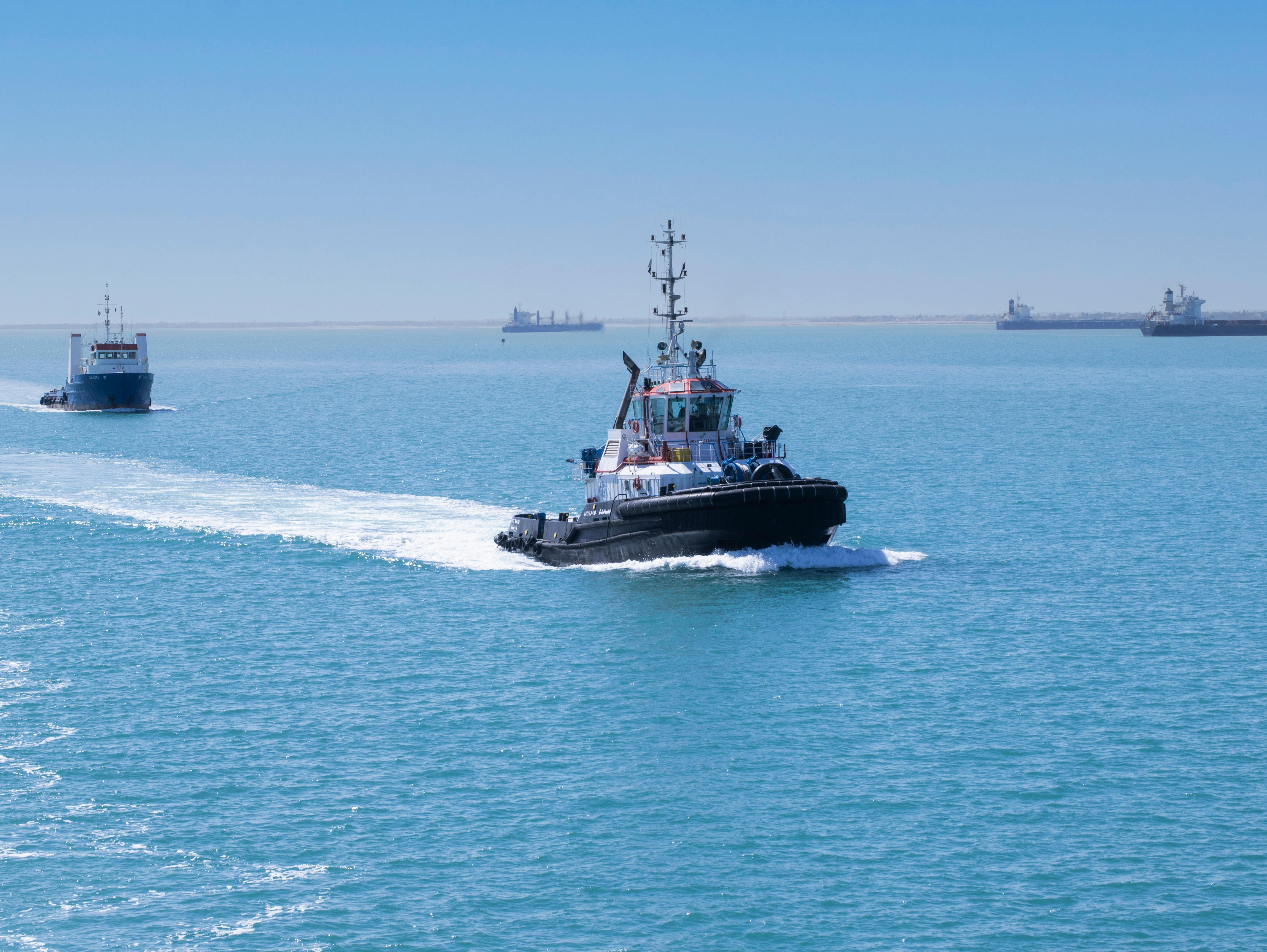Suez Canal Explained: History, Impact, Crises & Future in Global Trade
Some places in the world carry the weight of centuries, economies, and empires in less than 200 kilometers. The Suez Canal is one of those places. I used to think of canals in the simplest of terms—a handy shortcut, economically rational, maybe a little dull. If you’d asked me a decade ago about the Suez Canal’s real significance, I probably would’ve mumbled about “Panama being the other big one” and left it at that. Turns out, my first impressions couldn’t have missed the mark more. The Suez is not only a feat of 19th-century engineering but an unignorable nerve center in the bloodstream of global trade—one whose influence (and vulnerability) keeps growing, not shrinking.1
Why does everyone—from ship captains to hedge fund managers, history buffs to heads of state—end up obsessed with this strip of water connecting the Mediterranean Sea to the Red Sea? What really happens when things go sideways, as the world saw in March 2021? And does anything about its significance look likely to change as news cycles, climate patterns, and global politics shift under our feet?
In this exhaustive guide, I’ll unpack what the Suez Canal really is and does, revealing the layers—from ancient dreams to today’s tangled geopolitics. You’ll get the hard data, but also the lived realities, cultural insights, personal mishaps (Ever tried to map global shipping in real-time during a canal blockage? It’s chaos—brilliant, maddening chaos!), economic facts, and a few predictions that might just surprise you. Whether you’re here to boost your understanding for business, academia, or just that next trivia night, there’s a story waiting—a story that’s still being written every day a container ship passes through.2
What is the Suez Canal? The Waterway That Changed the World
Let’s start at first principles. The Suez Canal is a 120-mile (about 193 km for my metric friends) artificial waterway in Egypt, slicing a line from Port Said on the Mediterranean to Suez on the Red Sea. In the simplest logistical terms, it does one thing: lets ships skip the 6,000-mile detour around Africa’s Cape of Good Hope.3 Simple, right? Not quite. The numbers themselves boggle the mind: In 2023 alone, over 23,000 ships passed through, carrying roughly 12% of global trade, including 30% of all containerized freight and significant shares of both crude and LNG exports.4
Key Insight: Why the Suez Isn’t Just a Shortcut
What really strikes me is how the Canal transforms time into economic power. It reduces journey times for Asia-Europe shipping routes by 8 to 15 days, directly influencing shipping costs, insurance rates, and even the cost of everyday consumer goods. If you buy something labeled “Made in China” in Europe or North America, there’s a solid chance it rode through the Suez Canal in the not-so-distant past.5
Ancient Dreams, Modern Reality: The Canal’s Surprising Origins
If you assume the Suez Canal was a purely modern creation, think again. The ambition to link the Red Sea with the Mediterranean dates back to the pharaohs—some say around 1800 BCE, Egyptians began experimenting with canal construction in the region.6 Multiple ancient attempts fell short, but the basic concept—shortening trade, moving armies, projecting power—was always there. The version we know was masterminded in the 19th century by French diplomat Ferdinand de Lesseps and opened in 1869 after a tumultuous 10-year build. Colonial politics, conscripted labor (including a dark legacy of hardship and disease), and global rivalries all left their mark.
- First “canal” attempt: Pharaoh Senusret III (~1850 BCE)
- Classical references: Both Darius the Great & Ptolemaic rulers tried it
- Medieval neglect: Sand and politics left the canal dream buried for centuries
- Modern completion: Official opening in 1869 marked a new age of shipping
But honestly, even knowing the timelines doesn’t prepare you for the live-wire feeling on the ground. I remember standing in Ismailia, hearing local legends and watching ships almost scrape their sides past the banks—history and urgency colliding in real time. Tangible, unmistakable, uniquely Suez.
At the Core of Global Trade: How Suez Drives Economic Flows
While many economic “choke points” exist worldwide, few rival the daily traffic and economic leverage of the Suez Canal. The implications ripple far beyond Egypt’s borders; a single day’s closure can freeze roughly $10 billion in global trade, jostle oil prices by as much as 5%, and trigger downstream supply chain snags from Hamburg to Hong Kong.7 I’ve seen analysts completely recalibrate risk models overnight when the Suez hits headlines.
| Year | Ships (Annual) | Tonnage (Billion MT) | Percentage of Global Trade |
|---|---|---|---|
| 2010 | 17,900 | 0.8 | 8% |
| 2015 | 17,500 | 0.9 | 9% |
| 2020 | 19,311 | 1.17 | 10% |
| 2023 | 23,851 | 1.5 | 12% |
It’s worth pausing: with numbers like these, every incremental improvement (or hiccup) in Suez traffic alters quarterly profits, prices at the pump, and basic product pricing across multiple continents.8
Featured Snippet: What Happens When Suez Closes?
- Immediate halt in Asia-Europe/Asia-Americas cargo movement
- Surging shipping and insurance costs
- Re-routing via Africa (adds 6,000+ nautical miles & 15+ days to journeys)
- Shortages & price hikes ripple across commodity markets
Direct Answer: If the Suez Canal closes, global shipping slows dramatically, trade costs surge, many supply chains break, and some perishable or time-sensitive cargo misses the market entirely. Insurance claims and legal disputes soar, while international relations get tested.9
Epic Crises: From Wars to Shipping Blockades
This is where I get passionate, because Suez is never boring. Even before the “Ever Given” captured the world’s attention in 2021, major disruptions were baked into Suez’s DNA. Here’s just a taste:
- The Suez Crisis (1956): When Egypt nationalized the canal, the UK, France, and Israel launched military action—a saga of intrigue, UN drama, and Cold War chess.
- The Six-Day War Closure (1967–1975): Canal shut for 8 years, trapping 15 cargo ships (“Yellow Fleet”) in the Great Bitter Lake, serving as a floating micro-society (I still find this story bonkers).10
- The Ever Given Blockage (2021): A single behemoth container ship runs aground, blocking all passage for six days; over $60 billion in trade delayed, global memes explode, shipping schedules unravel for months.
Actually, let’s clarify one thing: while accidents make headlines, chronic issues like canal depth, aging infrastructure, and climate vulnerability are equally critical. Back in 2017, I worked with a supply chain client who underestimated Suez’s draft restrictions—result: shipment delays, penalty clauses, and a sharp lesson learned.
The Suez Canal is Egypt’s second-largest source of foreign currency (after tourism), generating $9.4 billion in fiscal year 2023 alone. For Egypt, every day the canal runs smoothly is a victory for its national economy—and, by extension, for global supply chains.11
Power, Diplomacy, and the Canal’s Future
The “who controls the Suez” question has animated global power struggles for two centuries (longer, if we’re honest). Nationalization in 1956 remains a case study in post-colonial assertion and Cold War balancing. Today, Egypt retains sovereign authority via the Suez Canal Authority—yet the canal’s fate is entwined with international treaties, investment from Gulf states, and the priorities of major shipping conglomerates (think MSC, Maersk, COSCO, CMA CGM).12
Why Geopolitics Shapes Every Sail
The Suez doesn’t just move goods; it channels influence. U.S. and European navies keep a close eye on passage security because, as I’ve seen time and again with cyber risk assessments, even a minor Suez incident can upend oil markets, strategic supply, and regional stability for months. Every bilateral trade talk, from Brussels to Beijing, includes Suez as an explicit priority.
I’m still learning to read the “canal tea leaves”: changes in tolls, investments in canal expansion, and even infrastructure upgrades (like Suez’s 2015 expansion, adding a new lane and speeding up traffic) are watched as closely as OPEC output news. It’s not an exaggeration; it’s operational survival.

Alternatives to Suez: Are There Realistic Options?
I go back and forth on this point, honestly. Every major Suez incident triggers the same question in boardrooms and editorial think pieces: “Can’t we just go around?” In theory, if the canal is blocked, shippers can reroute around Africa—a detour with ancient precedent but staggering modern costs. Let’s talk about it plainly:
| Route | Distance (Nautical Miles) | Extra Days | Estimated Cost Increase |
|---|---|---|---|
| Suez Canal | ~8,500 | – | Base |
| Cape of Good Hope | ~14,000 | +15 | +30-40% |
Sounds simple enough—just tack on a couple of weeks and crank up the insurance premiums, right? Actually, it’s far more disruptive. Besides higher fuel, crew, and piracy risks, there’s the domino effect on just-in-time logistics (especially for car manufacturing, electronics, even pharmaceuticals). Remember, ships and ports run on synchronized slots. When you break that rhythm, chaos reigns.13
Key Insight: The Suez “No Real Substitute” Principle
Despite periodic talk of Arctic passages (“Northern Sea Route”), revived land bridges, or mega-train corridors, none are commercially or technically mature for mass diversion—yet. In 2023, only 1.5% of total East-West maritime trade crossed the Arctic, versus Suez’s dominant share.14
One thing I’ve learned: people love “what if” scenarios, but most shippers will weather enormous costs to avoid the Cape detour. When the Ever Given blocked Suez, only a few dozen ships out of hundreds braved the longer route. The math rarely pencils out.
Climate Change, Security & the Suez’s Uncertain Future
Let me think about this: Suez is at once invincible (it’s not moving) and deeply vulnerable (it’s all narrow water and sandbanks). The climate threat is real—not just to the canal itself, but to the supply chain logic that underpins current shipping patterns. Droughts threaten water levels, and extreme heat can disrupt navigation (engines, dredging). On top of this: increased traffic means a greater risk of accidents. The Suez Canal Authority invests heavily in dredging and deepening (to accommodate mega-ships), but climate models suggest the risk landscape is evolving faster than infrastructure can adapt.15
- Security risks: As 2024 has shown, regional instability (including tensions near Yemen and piracy in the Red Sea) can directly threaten Suez-bound shipping.
- Technological innovation: Digital navigation, autonomous piloting, and real-time logistics mapping are improving Suez operations, but uneven global adoption persists.
- Sustainability push: New restrictions on emissions and cleaner shipping fuels (especially EU/IMO regulations) will continue to reshape Suez’s role and importance.
Here’s an evolving thought: ten years from now, we’ll probably see a hybrid system—Suez remaining pivotal, but global trade flows fragmenting under climate, digital, and political stressors. The “single point of failure” model may well give way to distributed logic, but we’re not there yet.
Oh, and here’s another thing that fascinates me: the human side. I’ve spent time interviewing pilots and port managers; despite all the automation, every transit through the canal is a ballet—dozens of moving parts, human judgment calls, real-time recoveries. Last year, I learned that pilot fatigue and crew stress were among the top factors in minor incidents (close calls outnumber disasters about 10 to 1, by the way).
What Would You Do?
If you ran a shipping line, would you risk faster passage through Suez during periods of conflict, or pay more to detour for presumed safety? There’s no blanket answer; strategies shift with rates, weather, politics, and sometimes plain gut feeling.
- How much would you spend to avoid a headline risk?
- Can tech remove the “human factor” from canal navigation?
- What if rising sea levels erode Suez’s very banks?
Sometimes, the hardest lesson is that “permanent” infrastructure is far more fragile than advertised. Yet, as I watch clients and students puzzle over shipping scenarios, there’s no denying Suez’s core resilience. To call it just a “shortcut” misses the point—it’s global commerce, diplomacy, technology, and ambition, concentrated into a channel that’s as vital today as when it was first imagined.
Conclusion & Future Questions
Looking back at my own learning curve with the Suez Canal—honestly, it’s been humbling. I used to approach it as just another case study in infrastructure or international relations. Now, I see it as a living organism—a bottleneck for global progress, a microcosm for climate change reality, a diplomatic flashpoint, and a stage for countless human dramas. Each year, as someone who consults in global logistics, I find that what really matters isn’t whether we can replace the Suez Canal, but whether we can build enough resilience—economic, environmental, and technological—into a system that will always have vulnerabilities.
I’ll be completely honest: the canal’s story isn’t only Egypt’s, or the shipping world’s; it’s ours—everyone who expects bananas in winter, phones assembled in Asia, or oil that flows with barely a thought. Every time the Suez is in the news, it’s a reminder that our globalized miracle is built, in part, on a single thread of water and sand. Understanding that—on more than just a technical level—is essential for anyone serious about global commerce, policy, or even basic citizenship.
Ready for the Next Chapter?
The future of the Suez Canal is uncertain, messy, and—let’s face it—a little thrilling. If you’re curious about how new technology, shifting climate, or changing global alliances might reshape the world’s trade backbone, keep watching this space. And if you want a deeper dive into alternative shipping routes, the Ever Given incident, or future scenarios, see our related articles on global shipping routes and maritime chokepoints.
References
Suez Canal Reference List



